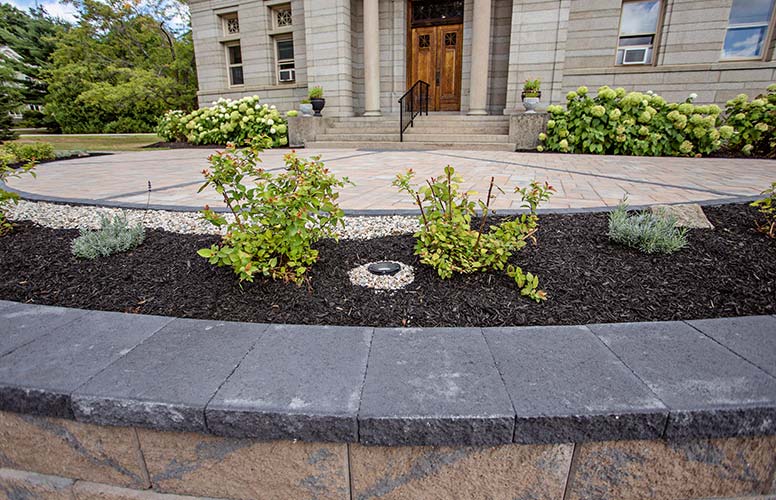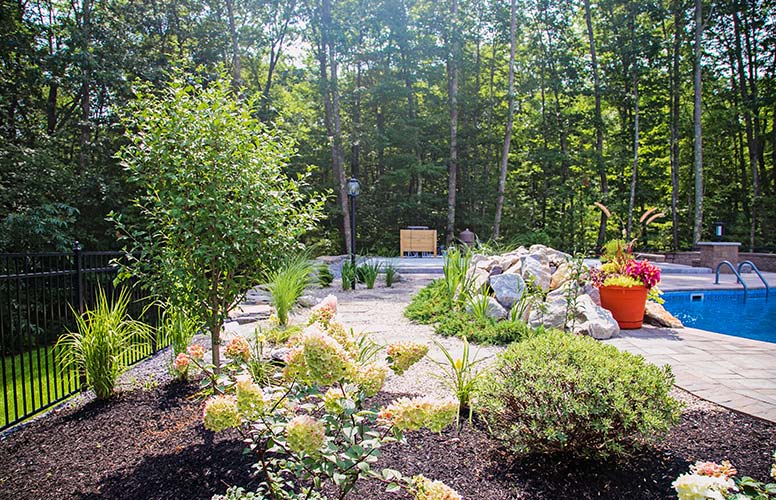Getting Ready For Spring? Here’s Your Step-By-Step Guide For Laying Patio Pavers
Are you looking to add a patio to your outdoor space? Installing patio pavers is an ideal and cost-effective way to do just that. With the right...
Are you looking to start a garden but don’t know which route to go?
Read on to learn more about the pros and cons of raised beds versus in-ground gardening. With a little bit of research, you can decide which way is best for your needs.
Raised bed gardening involves growing plants in soil that’s higher than the ground level. This is often done with wood, stone, or even plastic boards used as borders around the soil. (It’s important to note that while it’s possible to have raised beds without borders, they are not recommended because they can cause soil erosion and runoff.)

Advantages of this type of gardening include better drainage, increased access to sunlight, and improved aeration for plant roots. Additionally, raising beds keep weeds down since there is less contact between the ground and the plants themselves. Lastly, raised beds are also great for those with limited space because they allow gardeners to maximize their planting area without taking up too much land.
Let’s break down the benefits of a raised bed even further.
Raised garden beds are designed so that they are higher off the ground than traditional gardens, which makes it easier to reach everything without having to stoop or kneel down. This makes them accessible for people of all ages and physical abilities since bending over or kneeling down on the ground can be difficult for some.
Plus, if you have knee or back pain, you won’t have to worry about putting extra strain on those areas while tending to your plants!
The soil quality in raised beds is usually much higher than in standard gardens because they provide superior drainage and aeration for your plants’ roots. This means that your plants will get more oxygen and nutrients from the soil, resulting in healthier growth.
You’ll also find that weeds are much less of an issue when using this type of gardening method because there isn’t as much loose soil for them to take root in.
Since raised beds keep water contained within their borders, they provide ideal conditions for efficient watering. The soil stays moist longer than with regular gardens since the sides act as barriers that prevent evaporation from happening too quickly.
This also helps reduce water waste since you won’t need to water as often or use as much water each time you do water your plants!
Building a raised garden is a great way to grow flowers — it offers drainage, aeration, and protection from pests. The size and shape of the planter can be changed with ease, making it easier to create just the right environment for various types of plants. And with proper soil recipes and planning, nearly any flower can grow in a raised garden bed.
Some favorites include perennial favorites such as daylilies, coneflowers, astilbes, daisies, and irises; annuals like snapdragons, salvia, and verbena; bulbs such as crocus and tulips; tropicals like hostas and elephant ears; vines such as clematis; evergreen shrubs like boxwood; wildflowers such as black-eyed Susans…the possibilities are endless!
In-ground gardening involves planting directly into the earth. This type of gardening offers several advantages over raised bed gardening.

By planting in-ground, you can take advantage of natural fertilizers such as composted leaves or grass clippings, as well as animal manure from nearby farms or stables. Another benefit is that because there are no walls or other barriers around them, in-ground gardens have better drainage than raised beds do.
Now let’s break down the benefits of in-ground gardening.
One of the most significant benefits of in-ground flower beds is that they require far less maintenance than above-ground beds. This is because in-ground beds are planted directly into the soil, meaning there is less work to do prior to planting.
And since it’s easier for root systems to expand when planted in the ground, your flowers will be better able to access water and nutrients, meaning you won’t have to worry about fertilizing or watering as often.
If you’re looking for a way to improve drainage on your property, then an in-ground flower bed is worth considering.
Since these beds are installed directly into the soil, they act as natural water collectors and can help prevent flooding by redirecting rainwater away from your house and into other parts of your yard. This type of drainage system is especially beneficial if you live in an area with heavy rainfall or frequent floods.
No matter which type of gardening you choose – raised bed vs. in-ground – both offer unique benefits that can help make your garden thrive! With a little bit of research and planning, you can decide which will be best for your needs to enjoy fresh vegetables all season long!
Now that you know some of the benefits of raised garden beds and in-ground garden beds, it’s time to get started on your own gardening project!
If you need help getting your raised garden beds set up, our lawn care professionals at Greencare Lawn Management would be glad to help! We can assist with everything from designing and installing your raised garden beds to choosing the best plants and flowers for your needs.
Contact us today for a free estimate to get started on creating a beautiful and productive raised garden bed for your Maine home or business!